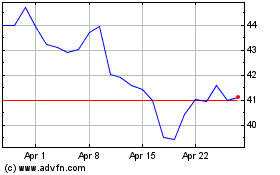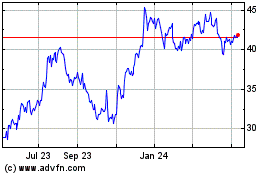On Tuesday, with the release of Federal Reserve’s stress test
results under Comprehensive Capital Analysis and Review (CCAR),
many big banks that passed took immediate action to raise their
dividends. The Fed allowed these banks to carry on with their
capital plans as well.
These banks now have the privilege to increase dividends and buy
back shares. Following concerns that banks might not have
sufficient capital to counter another financial crisis, they were
asked to submit their respective capital plans to the Fed. It was
intimated to these banks that payment of higher dividends will be
restricted if they fail to meet the requirement of 5% ratio of core
capital to risk-weighted assets among other requirements.
The results also brought good tidings for the weaker banks.
These banks were given the consent to raise capital by issuing
shares to repay Troubled Asset Relief Program (TARP) dues.
Root of the Stress Test
Currently authorized under the Dodd-Frank financial-services
law, the stress tests were first introduced after the 2008
financial crisis. During this economic downturn, big financial
institutions, like Lehman Brothers and AIG (AIG),
collapsed and several other big banks were at the verge of fading.
Therefore, such situation compelled the US government to infuse
billions of dollars into credit markets and to save the entire
financial system from failing.
The prior tests were conducted during early 2011, late 2010 and
2009. The periodic stress tests monitor the 19 banks that are
regulated by the Federal Reserve.
The environment of the last two rounds of stress tests along
with the latest one is quite dissimilar to the Fed's first round.
The first round, conducted when the country was teetering under
tremendous recessionary pressure, was aimed at estimating how much
the banks would lose if the economic downturn proved deeper than
expected. Since then, the test rounds are more like precautionary
measures amid economic recovery.
The Federal Reserve’s latest stress test scenario projections
include input data supplied by the 19 banks participating in CCAR
2012 and models created by the regulatory staff and evaluated by a
group of Fed economists and analysts.
These models were developed with the intent to inculcate the
impact of the macroeconomic and financial market factors that are
included in the Supervisory Stress Scenario and distinctive factors
of the banks’ loans and securities portfolios, trading as well as
other factors affecting losses, revenue and expenses.
Moreover, the Fed's stress test was conducted to find out
whether the banks have enough capital to survive another financial
crisis, including a hypothetically 13% unemployment rate, 50% fall
in stock prices, 21% drop in housing prices along with economic
downturn in Europe and Asia. However, the fourth round of stress
test had tougher requirements compared with the prior ones.
Further, under the Fed’s 2012 Capital Plan Review, 11 bank
holding companies with total assets of more than $50 billion that
were not included in the CCAR were also assessed, though not as
extensively compared with the CCAR submissions. Moreover, Fed did
not disclose their results publicly as the Board did not conduct an
independent supervisory stress test for such banks.
Among those 11 banks, Discover Financial
Services (DFS), Zions Bancorporation
(ZION) and Northern Trust Corporation (NTRS) are
some big names.
Qualified Banks
Wells Fargo & Company (WFC),
JPMorgan Chase & Co. (JPM) and U.S.
Bancorp (USB) are among the major banks that have received
clearance from the Fed to raise their dividends or repurchase
shares.
Wells Fargo increased its quarterly dividend to 22 cents per
share from 12 cents. However, this is much lower than the company’s
pre-recession quarterly dividend payment of 34 cents.
JPMorgan increased its quarterly dividend to 30 cents per share
from 25 cents. Also, the company authorized a buyback of $15
billion worth of shares, out of which $12 billion is permitted for
2012 and an additional $3 billion is approved till the end of first
quarter of 2013.
U.S. Bancorp increased its dividend to 19.5 cents per share from
12.5 cents. The bank also authorized a 100 million share
repurchase, which it intends to complete by the end of March
2013.
Another major bank, Bank of America Corporation
(BAC), which pays a quarterly dividend of only a penny, passed the
test, though has huge holdings of home loans, which might lead to
further losses. However, BofA’s capital plan did not include the
approval for hiking dividend as the firm’s request was repudiated
last year for the same.
Moreover, The Goldman Sachs Group Inc. (GS)
received the Fed’s approval for its capital plan, which includes
repurchase of common stock and a dividend increase through the
first quarter of 2013.
Banks on Shaky Ground
Citigroup Inc. (C) withcore capital ratio to
risk-weighted assets of 4.9% failed the test. Fed has discarded
Citi’s plan to boost capital return, and therefore the bank plans
to resubmit its capital plans later this year. However, no
objection was pertained for the payment of dividend at current
levels. The Fed plans to counter a refurbished capital plan within
75 days.
Apart from Citi, Ally Financial and SunTrust Banks
Inc. (STI) with 2.5% and 4.8% capital ratios,
respectively, remain on unstable position, struggling with troubled
mortgages and other distressed businesses.
Moreover, the insurance company MetLife Inc.
(MET) also failed the stress test in spite of meeting the 5%
capital ratio requirement. The reason for this failure was the
amount of risk-weighted capital.
TARP Repayment Still Due
Of the total $245 billion handed out to banks, more than $15
billion is still due.
Many of the regional banks that have still not repaid the entire
bailout money will not be allowed to increase their dividend
payments, even if they wish to do so. As soon as these banks repay
the bailout money they will be allowed to increase dividend
payments, provided they meet the requirements to pass the stress
test.
Among 31 banks under stress test, Regions Financial
Corp. (RF) and Zions are still to repay the TARP money.
However, following the stress test results, these two banks have
announced their plans to clear off TARP dues.
The Mode of Recovery
This is not the final round. The big banks will have to undergo
the Fed’s stress test once every year. The primary intention of the
stress test is to check a bank’s financial strength to fight
another financial catastrophe.
The economic benefits of the stress tests are indisputable.
These would help to build up weak capital levels of banks, which
are always a threat to the economy. Also, this could ultimately
translate to less involvement of the taxpayers’ money for bailing
out troubled financial institutions.
However, the government must necessarily set some policies so
that every industry participants contribute to the overall
profitability. While the bigger banks benefited greatly from the
various programs launched by the government, many smaller banks are
still trying hard to catch up.
No matter what, the approval from Federal Reserve to increase
dividend payment will definitely accelerate the pace of economic
recovery.
AMER INTL GRP (AIG): Free Stock Analysis Report
BANK OF AMER CP (BAC): Free Stock Analysis Report
CITIGROUP INC (C): Free Stock Analysis Report
DISCOVER FIN SV (DFS): Free Stock Analysis Report
GOLDMAN SACHS (GS): Free Stock Analysis Report
JPMORGAN CHASE (JPM): Free Stock Analysis Report
METLIFE INC (MET): Free Stock Analysis Report
NORTHERN TRUST (NTRS): Free Stock Analysis Report
REGIONS FINL CP (RF): Free Stock Analysis Report
SUNTRUST BKS (STI): Free Stock Analysis Report
US BANCORP (USB): Free Stock Analysis Report
WELLS FARGO-NEW (WFC): Free Stock Analysis Report
ZIONS BANCORP (ZION): Free Stock Analysis Report
To read this article on Zacks.com click here.
Zacks Investment Research
US Bancorp (NYSE:USB)
Historical Stock Chart
From Apr 2024 to May 2024

US Bancorp (NYSE:USB)
Historical Stock Chart
From May 2023 to May 2024
